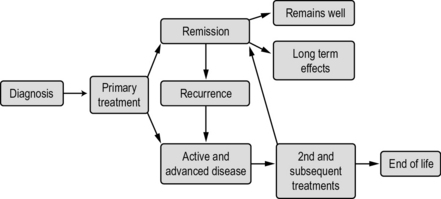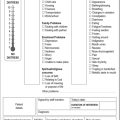19 Introducing the case study
Chapters 19–24 follow a patient diagnosed with breast cancer, in the form of a case study. Each chapter identifies a stage of the patient experience. As the case study unfolds, there are a number of activities to complete. In each activity, you are given the opportunity to explore a variety of nursing interventions and provide holistic support for both the patient and her family. You are encouraged to refer back to the anatomy and physiology, and other health theory, in Sections 1 and 2. Practical exercises are suggested for you to do either while on placement or by reflecting on previous experience. It is, therefore, useful to have your notes from Sections 1 and 2 handy since you will be directed back to some of the activities you have already completed.
From the point of diagnosis, patients encounter many different physical, psychological, social and economical effects of cancer and its treatment. Their experience will be unique and the time frame for each individual will be different. As healthcare professionals, we are generally unable to predict the overall outcome. We can, however, surmise a number of possible phases patients may experience. Figure 19.1 outlines these different phases which can help healthcare professionals to identify support and services that patients might need at different points.
It is worthwhile to read all of the chapters in the case study. This gives you an insight into what patients have experienced prior to their current situation, as well as what might be ahead of them. It is also a good idea to arrange some insight visits to some of the other clinical environments within the pathway. To help you do this, go back to Section 2 to identify other cancer/palliative care treatments and experiences.
Case study introduction
The remaining chapters focus on the following:
• Chapter 20: Michelle receives her diagnosis and discusses treatment options.
• Chapter 21: she experiences treatment and associated complications.
• Chapter 22: she develops complex symptoms associated with advancing disease.
• Chapters 23 and 24: two alternative endings to Michelle’s cancer experience.
• Chapter 23: as Michelle’s disease advances, we explore palliation of her symptoms and care as she moves towards receiving last days of life care.
• Chapter 24: the final pathway explores how she makes the transition to living beyond cancer.



